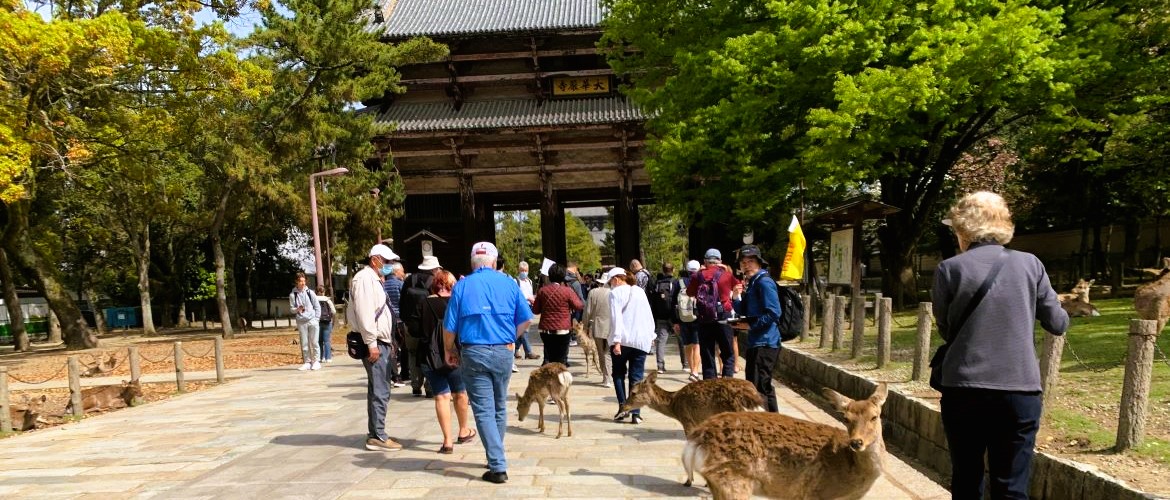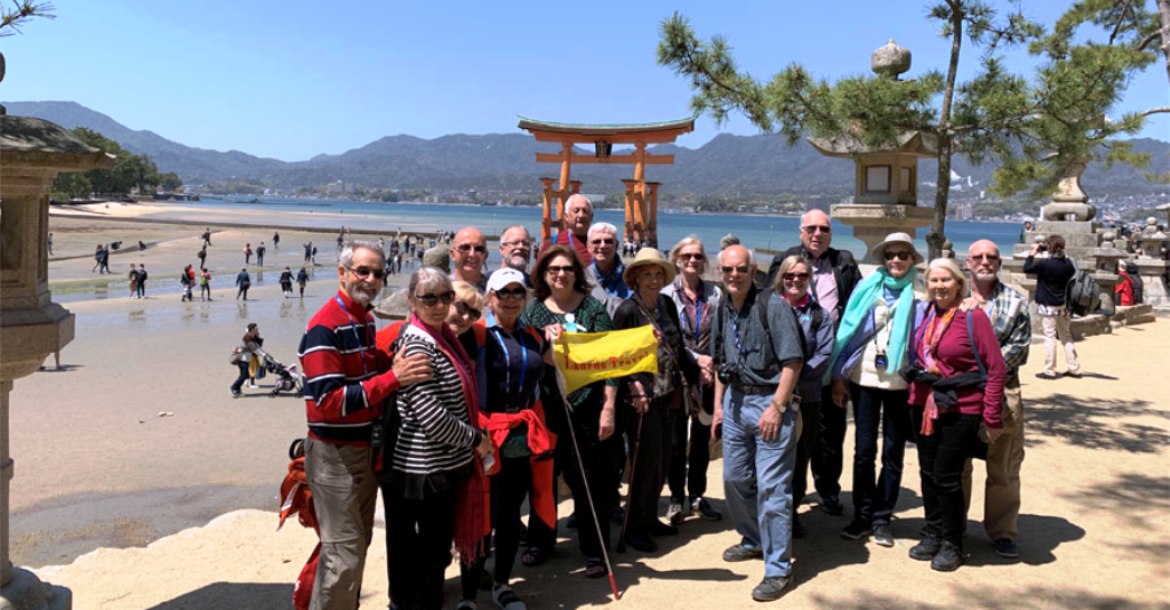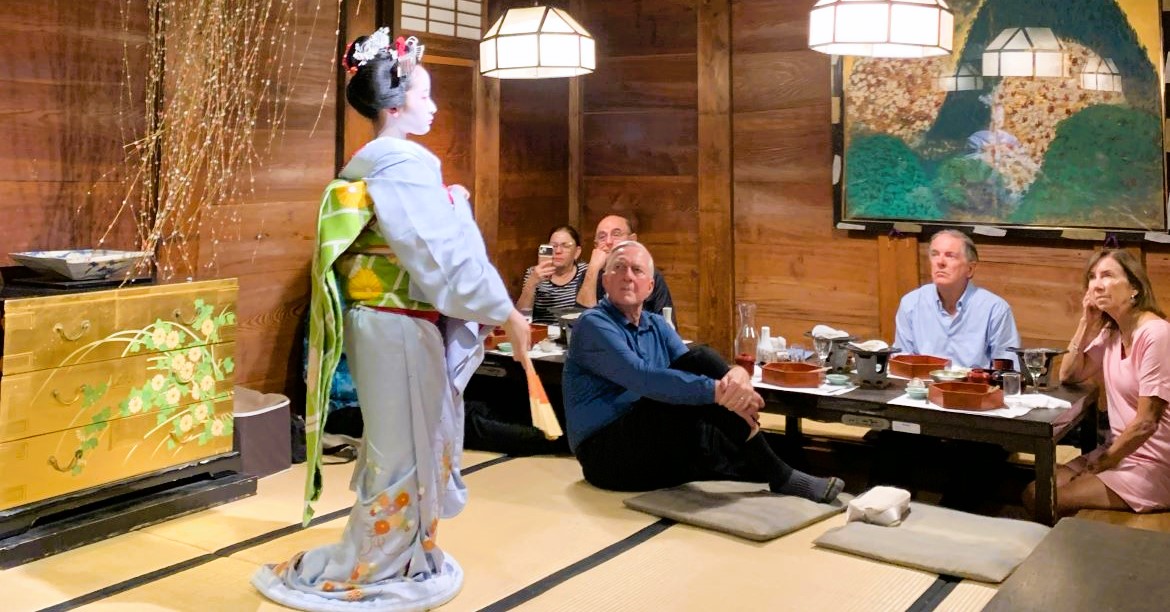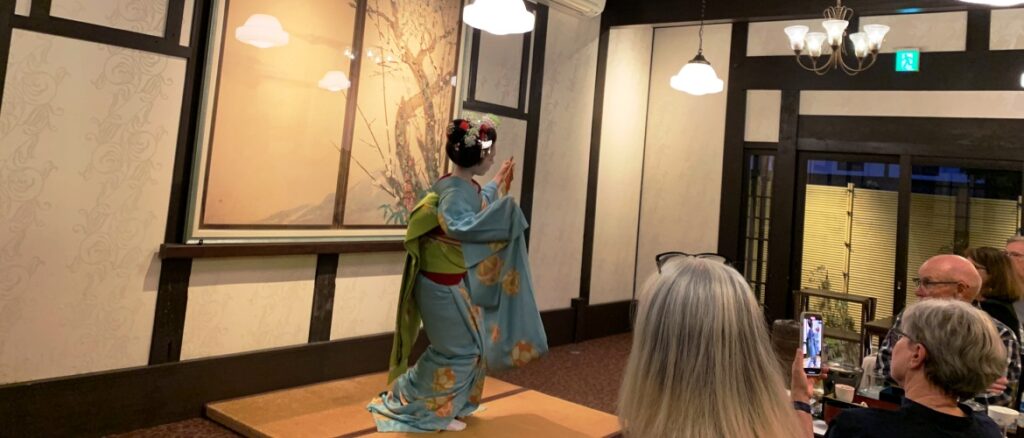
14-day Best of Japan
Tokyo – Mt. Fuji – Hakone – Kanazawa – Takayama – Shirakawa-go – Kyoto – Nara – Osaka – Hiroshima – Miyajima – Tokyo
With a focus on history and culture, this premium small-group Japan tour showcases the best of the Land of the Rising Sun. From the present capital of Tokyo to the former imperial seat of Kyoto, Japan’s illustrious blend of ancient traditions with state-of-the-art modernity is on full display. Special events include a sushi making lesson and a traditional kaiseki dinner while being entertained by a dancing geisha (maiko).
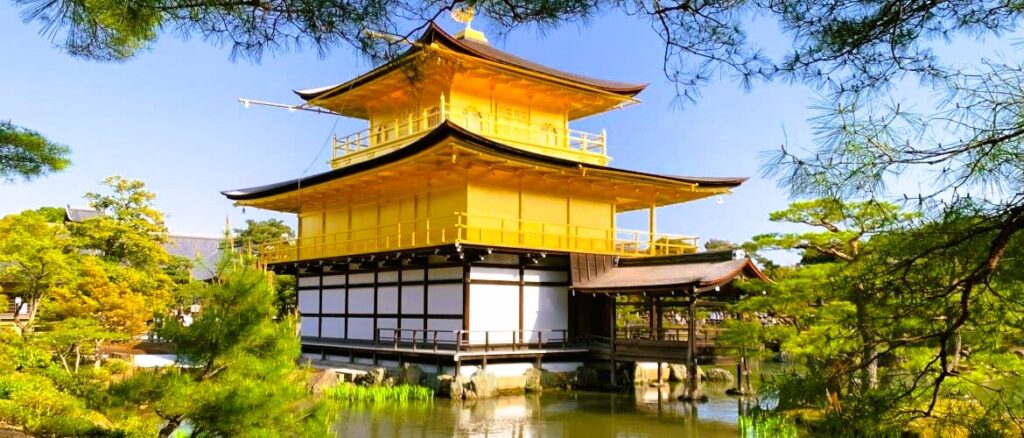
12-day Essential Japan
Tokyo – Mt. Fuji – Hakone – Kanazawa – Takayama – Shirakawa – Kyoto – Nara – Osaka
Join us on this exquisite small group Japan tour through the heart of Japan, where ancient traditions gracefully dance alongside the vibrant rhythm of modernity. In dynamic Tokyo and Osaka, neon lights and bustling energy of urban life pulse with the beat of contemporary Japan. As we wander through the poetic streets of Kyoto, where cherry blossoms and autumn leaves whisper tales of ancient elegance, we find ourselves embraced by the essence of a bygone era.
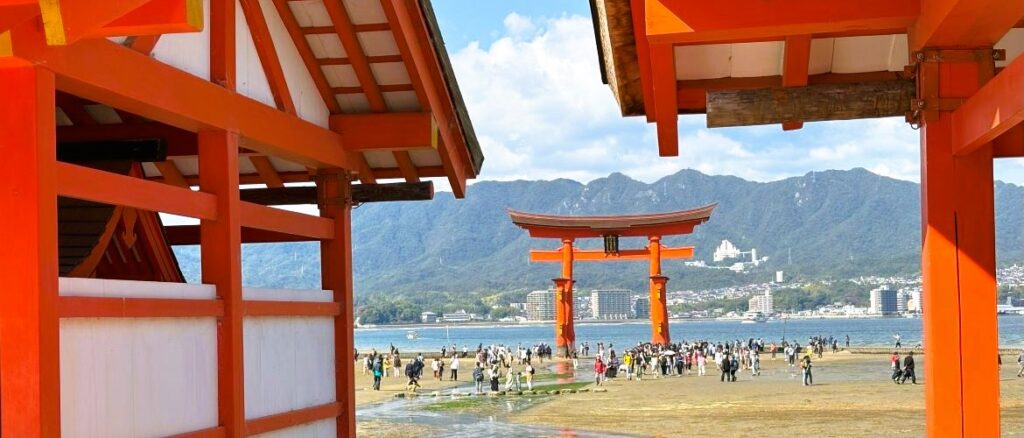
19-day Classic Japan
Tokyo – Mt. Fuji – Hakone – Kanazawa – Shirakawa-go – Kyoto – Nara – Osaka – Hiroshima – Miyajima – Nagasaki – Naha – Tokyo
From the tranquil temples of Kyoto and the bustling streets of Tokyo to the historical beauty of Nagasaki and the tropical allure of Okinawa, this masterfully crafted Japan tour offers a unique blend of cultural exploration and natural wonder, including the iconic Mt. Fuji and the poignant history of Hiroshima. Conducted by expert guides, this premium small-group tour is your quintessential introduction to Japan.

16-day Japan & South Korea
Tokyo – Mt. Fuji – Hakone – Kanazawa – Shirakawa – Takayama – Kyoto – Nara – Osaka – Busan – Gyeongju – Seoul
Discover the magic of Japan and South Korea on this unforgettable journey. Explore Tokyo’s vibrant streets, Kyoto’s tranquil temples, Seoul’s dynamic culture, and Gyeongju’s historic charm. This journey seamlessly blends ancient traditions with modern marvels, offering a rich tapestry of experiences that will inspire and captivate you at every turn.
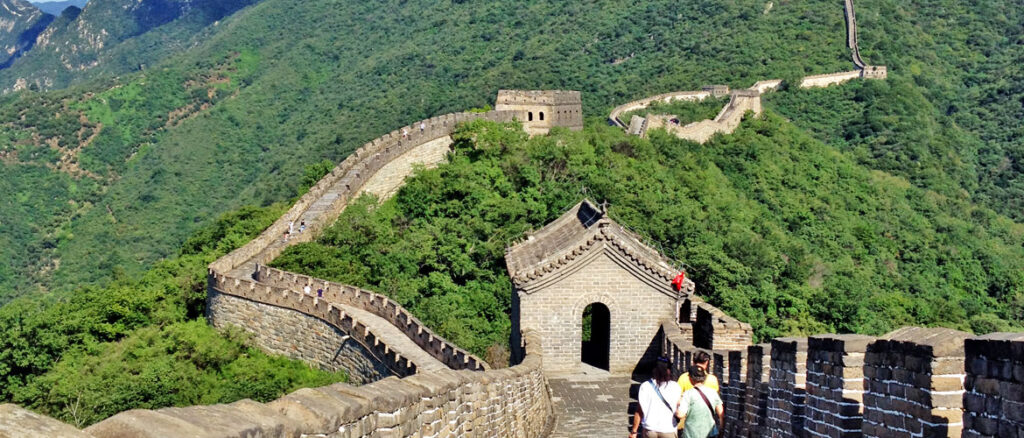
19-day Best of China & Japan
Beijing – Xi’an – Chengdu – Shanghai – Kyoto – Nara – Osaka – Hiroshima – Tokyo
This meticulously curated itinerary takes you on a remarkable journey of discovery showcasing China and Japan’s iconic landmarks, serene landscapes, and ancient traditions. Combining most popular destinations of China and Japan, this fully guided small-group tour is a perfect introduction to these East Asian countries for first-time visitors.
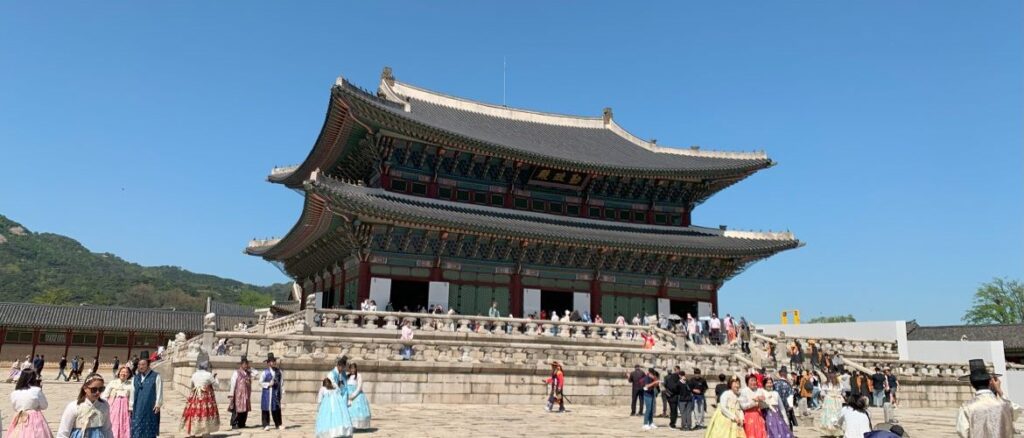
29-day Japan, South Korea & China
Tokyo – Mt. Fuji – Hakone – Kanazawa – Shirakawa – Takayama – Kyoto – Nara – Osaka – Hiroshima – Miyajima – Nagasaki – Busan – Gyeongju – Seoul – Beijing – Xi’an – Chengdu – Shanghai
Crafted by experts with decades of experience, this grand tour of Japan, South Korea & China is your ultimate East Asia adventure. Our unrivalled expertise, expert guides & meticulous attention to detail ensure that every moment of your journey is filled with discovery and delight.
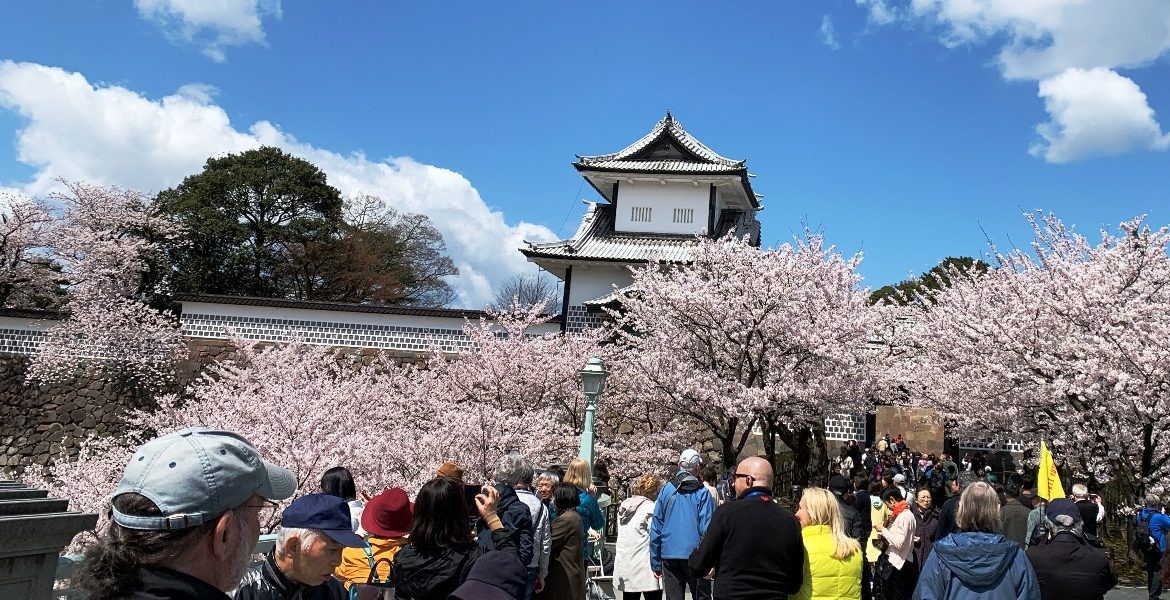
As one of the best Japan tour companies around, we offer best Japan tours from Canada for a clientele from around the world. Whether you are looking for a 20-day luxury tour of Japan or a short semi-independent Japan vacation package, you can find it here from Laurus Travel.
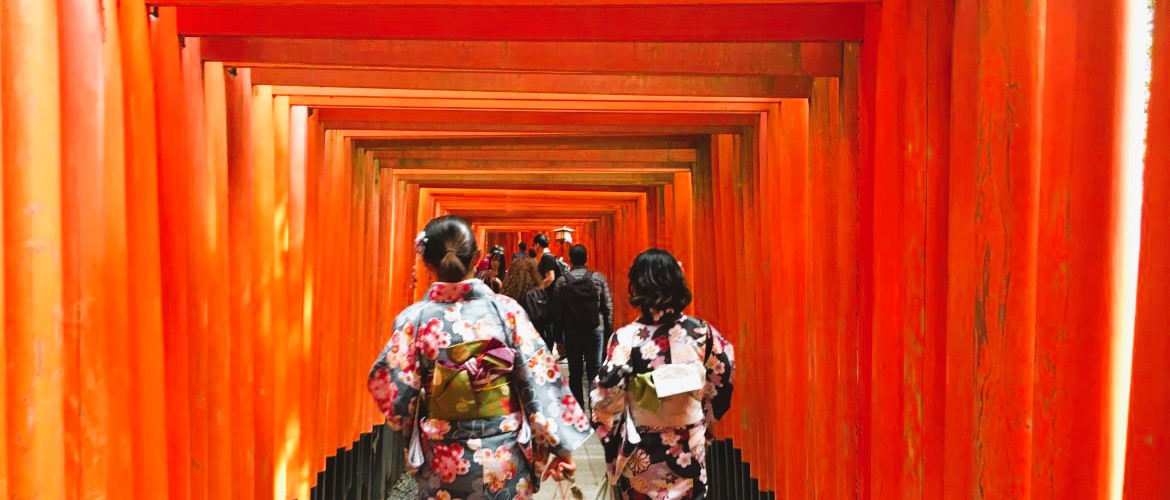
In addition to scheduled small-group Japan tours, we also provides customized Japan travel packages to families with young children and private parties of any size. Our Japan tours are ideal for travellers interested in culture and history.
Best Japan Tours – Recommended Itinerary
14-day Best of Japan
Tokyo – Mt. Fuji – Hakone – Kanazawa – Takayama – Shirakawa – Kyoto – Nara – Osaka – Hiroshima – Miyajima – Tokyo
With a focus on history and culture, this premium small-group Japan tour showcases the best of the Land of the Rising Sun. From the present capital of Tokyo to the former imperial seat of Kyoto, Japan’s illustrious blend of ancient traditions with state-of-the-art modernity is on full display.
Important Features
- Small group size – average 16, maximum 20
- Experienced professional guides
- Premium hotel accommodations
- Quality Japanese & Western cuisines
- Sushi making lesson
- Kaiseki dinner with geisha dancer (maiko) performance
- Yakiniku (BBQ) dinner featuring premium Japanese beef
- No shopping stops
Meal Code: B = breakfast / L = lunch / D = dinner
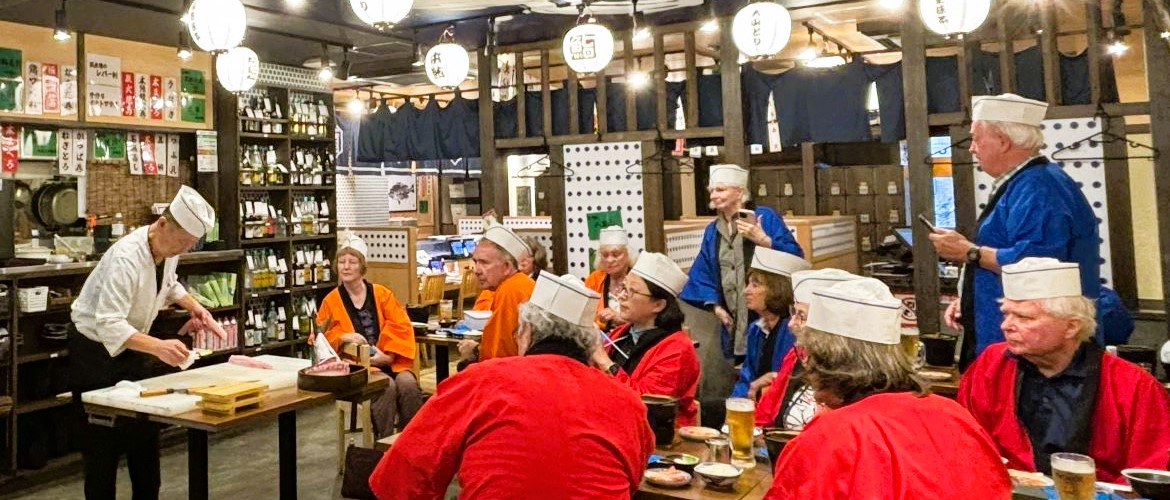
Day 1/Mon: Departing Home City
The journey begins with your transpacific flight departing from a city of your choice. You’ll lose a day upon crossing the International Date Line.
Day 2/Tue: Arrival in Tokyo
Welcome to Tokyo!
Please make your way to the hotel on your own. Detailed up-to-date information on how to get to the hotel will be provided in the final update two weeks before departure. Private transfer can be arranged on request.
Day 3/Wed: Tokyo (B/L)
Tokyo, literally meaning “eastern capital” and officially named Tokyo Metropolis, is one of the most populous mega-cities in the world with a population of 14 million. Formerly known as Edo, the city has been the de facto seat of the Japanese government since 1603 when shogun Tokugawa Ieyasu chose the city for his headquarters. The shogun (general) was a hereditary commander ceremoniously appointed by the emperor but held real power over the country during the shogunate period between 1192 and 1867. Edo was renamed Tokyo after Emperor Meiji moved his seat from Kyoto in 1868 when the last shogun was forced to return power to the imperial court. The city covers an area of 2,187 square kilometres following the merger in 1943 of the city of Tokyo and Tokyo Prefecture.
Our full-day sightseeing begins at the plaza in front of the Imperial Palace. A stroll across the plaza accompanied by commentaries on the imperial family and the history of Tokyo gets the tour off to a good start.
We then proceed to Senso-ji, the oldest Buddhist temple in Tokyo dating back to 628.
After lunch, we drive through the ritzy Ginza shopping district on the way to Meiji Jingu, a Shinto shrine dedicated to Emperor Meiji (1852 -1912) and his wife.
We end the day with a visit to the observation deck atop the Tokyo Metropolitan Government Building in Shinjuku. On a clear day, the visitor could see the peak of Mount Fuji which is located about 84 km to the west. The building complex completed in 1990 at a cost of US$1 billion consists of three main structures each taking up a city block. The architect of the Tokyo Metropolitan Government Building is Kenzo Tange (1913 – 2005), who in 1987 became the first Japanese to win the Pritzker Prize for Architecture.
Day 4/Thu: Tokyo – Mt. Fuji – Hakone – Tokyo (B/L)
We depart at 7:30 AM for a full-day excursion to Mt Fuji and Hakone.
Mt. Fuji, the highest mountain (3,776 metres) in Japan, is a two-hour drive from Tokyo. We stop by the Fujisan World Heritage Center to view the summit and learn about the history, formation and ecology of Mt. Fuji through exhibits and a short film. However, it is purely a matter of luck whether the summit is visible as Mt. Fuji is often shrouded in clouds. Our schedule does not include hiking the mountain – the trails are open between July and early September and it would take the average person at least six hours to hike to the summit even if one starts from the highest station at 2,305 metres above sea level.
We then proceed to Lake Ashi in Hakone for a half-hour cruise across the lake. This is followed by a 10-minute cable car ride that transports us to the station overlooking the sulphur-spewing Owakudani Geothermal Valley. On a clear day, the cable car ride provides stunning views of Mt. Fuji and its surrounding mountain slopes.
We expect to arrive back at the hotel around 6:00 PM.
Day 5/Fri: Tokyo – Kanazawa (B)
Enjoy some downtime before boarding the high-speed train (Hakutaka #561, 11:24/14:17) to Kanazawa. Be sure to grab some snacks for lunch before getting on the train.
On the shores of the Sea of Japan, Kanazawa is the capital of Ishikawa Prefecture. The city has a population of 463,000 and is considered a jewel of Japanese tourism that is often overlooked by foreign tourists due to its relatively remote location. Travellers coming here are richly rewarded with the well-preserved Edo-period city, where the samurai, merchants, geisha, and daimyo (lords) all left their mark.
Due to the proximity of the attractions, our sightseeing in Kanazawa is done exclusively on foot with occasional use of taxi to cover the short distances between some of the locations. Please expect to walk 5 to 8 km per day.
After hotel check-in, we walk, or go by taxi (2 km, 6 minutes) if the weather is rainy, to Higashi Chaya district. This is one of the three preserved historical geisha districts in Kanazawa (along with Nishichayagai and Kazuemachi) where geisha still entertain today.
Day 6/Sat: Kanazawa (B/L)
Today’s sightseeing on foot begins at Omicho Market, Kanazawa’s largest fresh food market particularly well known for seafood.
From the market, Kanazawa Castle is just a few minutes away on foot. The restored castle was originally built in 1580 for Maeda Toshiie, the fourth son of a minor samurai who entered the service of a powerful daimyo at the age of 15 and quickly rose through the ranks. The castle was reconstructed multiple times due to fire damages throughout its history. The last time a fire destroyed the castle was in 1881.
The Hishi Yagura turret, Gojikken Nagaya warehouse and the Hashizume-mon Tsuzuki Yagura turret were faithfully restored in 2001 to their 1809 form using traditional construction methods. Today’s pillars are constructed from the Japanese Hinoki cypress along with the use of the massive American cypress as ceiling beams. The reconstructed buildings feature roof tiles made of lead mixed with a little copper for the sake durability and aesthetics.
From the castle, we walk across a bridge to enter Kenroku-en, which used to be part of the castle. One of the “Three Great Gardens of Japan” (Koraku-en in Okayama and Kairaku-en in Mito being the other two), Kenroku-en was developed from the 1620s to the 1840s by the Maeda clan, the daimyo that ruled the former Kaga Domain.
The restaurant for lunch is a 12-minute (700 metres) walk from the garden.
After lunch, we walk across the street to enter Nagamachi, a historical preservation zone where the residents still go about their daily lives among the remnants of a bygone age. A highlight of the neighbourhood is the restored Nomura Samurai House, whose small but supremely exquisite traditional garden delights visitors from around the world.
Guests who are tired of walking can go back to the hotel from the samurai house by taxi (1.4 km) for about 750 yen or US$5.
Day 7/Sun: Kanazawa – Shirakawa – Takayama – Kanazawa (B/L)
We set out at 8:00 for a full-day excursion to Takayama and Shirakawa.
Famous for its inns, sake breweries, food festivals and local folk art, Takayama (118 km southeast of Kanazawa) is a delightful town nestled amongst the Japanese Alps. Our sightseeing takes in an open-air market, Sanmachi Historic District, and Takayama Jin’ya – government house of the region during the Tokugawa shogunate period.
After lunch, we travel northbound in the direction of Kanazawa to visit Shirakawa. Situated in a picturesque river valley, Shirakawa village is part of the UNESCO World Heritage Site known as Historic Villages of Shirakawa-go and Gokayama. The village’s gassho-style large houses with steeply pitched thatched roofs are said to be the only surviving examples of their kind in Japan.
Day 8/Mon: Kanazawa – Kyoto (B/L)
This morning we ride the express train (Tsurugi 15, 09:54/10:36; Thunderbird #16, 10:40/11:39) to Kyoto.
Nicknamed “City of Ten Thousand Shrines”, Kyoto (literal translation: capital city) served as Japan’s capital for more than one thousand years before the imperial court moved to Tokyo in 1868 with the onset of the Meiji Restoration (1868 to 1912, a historical period associated with the emergence of Japan as a modernized nation). Kyoto is a scaled replica of the Chinese Tang Dynasty’s capital Chang’an, present-day Xi’an. The Tang Dynasty (618 – 907) was a golden era in Chinese history and a time when Japanese adoption of Chinese culture reached its peak. Kyoto today, with a population of 1.5 million, forms a major part of the Kyoto-Osaka-Kobe metropolitan area.
Our first stop after lunch is Kinkaku-ji (Temple of Golden Pavilion). This is a Zen Buddhist temple and one of 17 locations comprising the Historic Monuments of Ancient Kyoto World Heritage Site.
We then proceed to the Arashiyama (Storm Mountain) area where our sightseeing takes in Tenryu-ji Temple and the Bamboo Forest. Located on the western outskirts of Kyoto, Arashiyama is famous for its immense natural beauty as well as its historical and cultural prominence due to the large number of well-preserved ancient Buddhist temples.
Day 9/Tue: Kyoto (B/D)
Today’s walking tour begins at the magnificent Nijo Castle. Construction of the castle began in 1601 under the order of Tokugawa Ieyasu, founder of the Tokugawa shogunate, but was not completed until 1626 during the reign of Iemitsu, the third Tokugawa shogun and grandson of Ieyasu. The Tokugawa shogunate was headquartered in Edo, present-day Tokyo, and Nijo Castle was the shogun’s residence in Kyoto where the imperial court was located. Nijo Castle is also the site that witnessed the ending of the Tokugawa shogunate. In late 1867, the last shogun, Yoshinobu, announced in the castle his decision to return his power back to the emperor. This was a watershed moment that helped usher in the Meiji Restoration, which, in turn, led to Japan’s industrialization and fundamentally transformed the Japanese society.
We then proceed to Kyoto Imperial Palace. Rich in tradition, Kyoto Imperial Palace preserves the look and ambiance of the palace as it had been in the time of Japan’s ancient imperial dynasties. The current Palace was rebuilt in 1855 and comprises several buildings that reflect the architectural styles of various periods. If Kyoto Imperial Palace is closed due to court functions, bad weather or any other reason, Higashi Hongan-ji, a Buddhist temple established by shogun Tokugawa Ieyasu in 1602, will be used as substitute.
Afterwards, we return to the hotel to freshen up before heading out for dinner, a traditional kaiseki banquet accompanied by the private performance of a dancing geisha known as maiko in Japanese.
Day 10/Wed: Kyoto (B)
Today is set aside for you to explore on your own.
Our recommendations include Kiyomizu-dera (Buddhist temple), Fushimi Inari Shrine (good for hiking), Ginkaku-ji (Silver Pavilion Temple), Kyoto National Museum, and Gion – the famous geisha entertainment district.
Day 11/Thu: Kyoto – Nara – Osaka – Hiroshima (B/L)
We depart for Nara at 07:45. The 45 km drive to the magnificent Todai-ji temple takes about an hour. This ancient Buddhist temple is well-known not only for its splendid architecture and the huge bronze statue of the Buddha in the main hall but also for the 1,200 wild deer roaming freely on the grounds of the temple.
Nara is the capital city of Nara Prefecture and a former capital of Japan (710 – 794). With a population of roughly 370,000 and an area of 280 square kilometres, the city occupies the northern part of Nara Prefecture. Eight temples, shrines and ruins together with Kasugayama Primeval Forest collectively form “The Historic Monuments of Ancient Nara” – a UNESCO World Heritage Site.
Afterwards we continue on to Osaka, where we visit the historic Osaka Castle and Osaka’s legendary shopping and entertainment district known as Dotonbori. Situated at the mouth of the Yodo River on Osaka Bay, Osaka is Japan’s third most populous city (after Tokyo and Yokohama) and plays a significant role in the Japanese economy. Osaka was once known as the “nation’s kitchen” because of its function as Japan’s rice trading centre during the Edo period.
We then transfer to the Shin Osaka Station for the late afternoon rail journey to Hiroshima (Sakura 563, 16:23/17:51).
Day 12/Fri: Hiroshima – Miyajima – Hiroshima (B/D)
Hiroshima, literally meaning ‘broad island’, is the capital of Hiroshima Prefecture and the largest city in the Chugoku region with a population of 1.2 million. Hiroshima is best known as the first city in history to be targeted by a nuclear weapon when the United States Army Air Forces dropped an atomic bomb on the city (and later on Nagasaki) at 8:15 a.m. on August 6, 1945, near the end of World War II. The highlight in Hiroshima, understandably but sadly, is the Peace Memorial Park which includes the Peace Memorial Museum, and the Atomic Bomb Dome that once served as the industrial promotion hall of the local prefect.
After a tour of the Peace Memorial Park complex including two hours in the museum onsite, we proceed to Miyajima Island by a combination of taxi, commuter train and ferry.
Officially known as Itsukushima, Miyajima is a small island (30 square kilometres, population 1,760) in Hiroshima Bay known for its forests and ancient temples. The seaside Itsukushima Shinto Shrine on the island is a UNESCO World Heritage Site and the “floating” torii gate in front of the shrine is the main reason for most visitors to come here.
Day 13/Sat: Hiroshima – Tokyo (B/D)
The rail journey back to Tokyo this morning takes 3 hours 50 minutes (Nozomi 10, 09:07/12:57).
Transfer to the hotel on arrival and spend the balance of the day exploring on your own. Our recommendations include shopping at Ginza and Akihabara, which even non-shoppers would find exciting. Also recommended are the top-rated Tokyo National Museum and the adjacent National Museum of Western Art located at Ueno Park.
Be sure to carry your passport with you. Merchandise purchases over 5,000 yen qualify for sales tax-exemption at many stores (this policy may change in 2025), but you’ll have to show your passport to claim it. If you are over 70 and want to enter Tokyo National Museum for free, you must present your passport as well.
Farewell dinner tonight features premium Japanese beef (wagyu).
Day 14/Sun: Tokyo – Return Home (B)
The tour ends this morning. The Airport Limousine Bus is highly recommended for your transfer to the airport. The shuttle bus costs 3,600 yen (US$25) to Narita airport and 1,500 yen (US$11.50) to Haneda airport. Private transfer can also be arranged on request.
Land price based on double occupancy from $8,978 CAD/$6,412 USD per person
Contact us for departure dates & hotel list.
Customers Testimonials
The 18 day Classic Japan was everything we expected having travelled with Laurus to China in 2018 and knowing their attention to detail, great accommodations, food and excellent guides. While Japan is a heavily populated country and the sights full of tourists, our guides effortlessly maneuvered the group through the train stations, onto the platforms and directly into our reserved seats. As seniors, this level of service and detail was greatly appreciated.
Jean N
Vancouver, British Columbia
Wonderful Japan tour with Laurus Travel
Apr 2025 • Solo
Just returned from a 14 day tour of Japan with Laurus Travel. As a solo traveller I was pleased to join this small group (15) tour. The accommodations and included meals and visits were exceptional. Everything was perfectly organized and we were accompanied throughout by friendly and knowledgeable guides. A beautiful country to visit, especially during cherry blossom season.
[ Deborah is from Ottawa, Ontario. See link below for her post on TripAdvisor ]
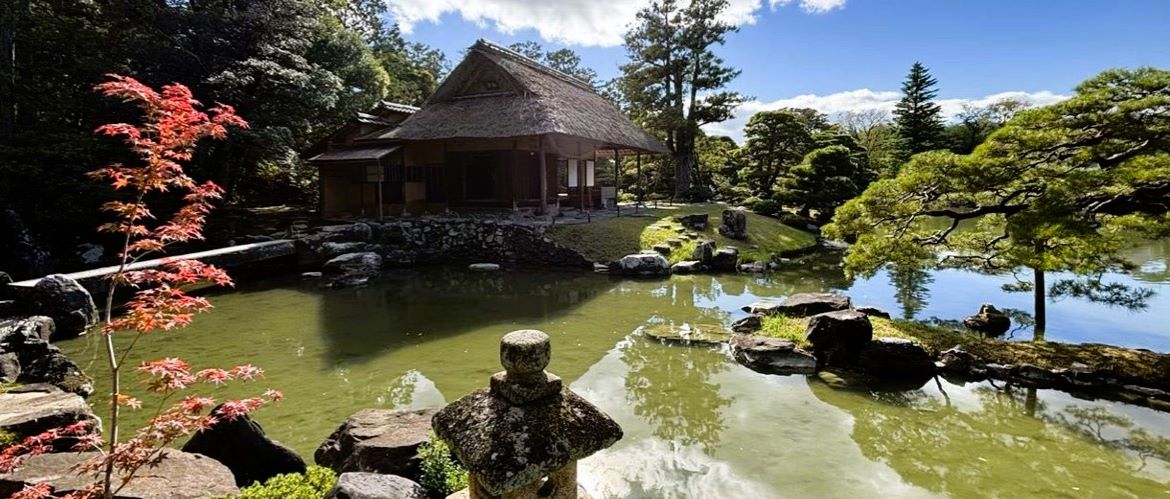
Passport & Visa
Your passport needs to have at least one blank visa page and six months validity at the end of the tour.
If you are from Canada, the US, the UK, Australia and New Zealand, you do not need a tourist visa to enter Japan as long as your stay is within 90 days.
Vaccination
No vaccination of any kind is mandatory. Vaccination against hepatitis A is highly recommended. Please check out the website of US CDC or Heath Canada for latest advisory.
